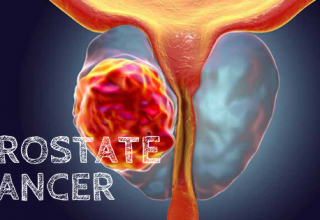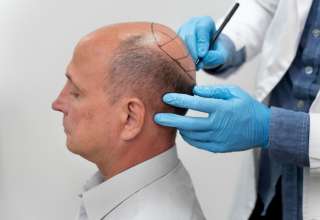A prostate cancer diagnosis can be a frightening event that brings up a wide range of feelings and concerns. Understanding the subtleties of the condition becomes crucial for well-informed decision-making and efficient management of the tornado of thoughts. This article examines what you should know and understand when you are told you have prostate cancer.
Understanding Prostate Cancer
Prostate cancer begins in the prostate gland, a walnut-sized structure found beneath the bladder in males. Cells in the prostate gland can become mutated and reproduce in an unnatural manner, which can lead to the development of a tumor. The progression of prostate cancer is normally slow, and it cannot cause any visible symptoms in its early stages. However, if the disease is not treated, it can become aggressive and spread to other parts of the body.
Diagnostic Procedures
A number of tests and procedures that are designed to identify abnormalities in the prostate gland are typically required in order to arrive at a diagnosis of prostate cancer. These can include a digital rectal exam (DRE), a test for prostate-specific antigen (PSA), imaging tests such as magnetic resonance imaging (MRI) or ultrasound, and a biopsy to obtain tissue samples for further study. Using these methods, medical professionals are able to detect the stage of the cancer as well as its level of aggressiveness, which helps them make decisions regarding therapy.
Laser Therapy
Laser therapy represents a promising approach in the treatment landscape for prostate cancer. As a form of focal therapy for prostate cancer, it offers targeted precision in delivering therapeutic effects while minimizing damage to surrounding healthy tissue. This minimally invasive procedure utilizes concentrated beams of light energy to destroy cancerous cells within the prostate gland, offering potential benefits such as reduced side effects and quicker recovery times compared to traditional treatments. By precisely targeting tumors, this therapy for prostate cancer aims to preserve urinary and sexual function, enhancing the quality of life for patients post-treatment. As part of a comprehensive treatment plan, laser therapy showcases potential as a viable option for individuals navigating prostate cancer diagnosis, offering hope for effective management with minimal impact on daily life.
Active Surveillance
Active surveillance, which is often referred to as careful waiting, is a method of monitoring the course of prostate cancer by doing routine checkups and testing without immediately intervening. The goal of this strategy is to prevent the potential adverse effects of aggressive treatments while simultaneously assuring early intervention in the event that the cancer develops. This strategy is frequently explored for men who have cancers that are low-risk or that grow slowly.
Surgery
Surgical procedures, in particular radical prostatectomy, involve the removal of the entire prostate gland as well as the tissues that surround it with surgical techniques. Localized prostate cancer that has not gone beyond the prostate gland is the type of cancer that is indicated for treatment with this strategy. Surgical removal of malignant tissue is beneficial; nonetheless, there are potential dangers associated with the procedure, including urine incontinence and erectile dysfunction.
Radiation Therapy
Radiotherapy is a treatment that targets cancer cells and destroys them by using high-energy radiation. External beam radiation therapy, also known as brachytherapy, is a method of administering radiation to the body that involves the use of a machine to deliver the radiation rays. Localized prostate cancer can be treated with radiation therapy as a primary treatment, or it can be used as adjuvant therapy after surgery to eradicate any cancer cells that have been left behind.
Hormone Therapy
Reducing the body’s levels of male hormones, or androgens, is the goal of hormone therapy, sometimes referred to as androgen deprivation therapy (ADT), as these hormones promote the growth of prostate cancer cells. Medication or surgical testicular excision (orchiectomy) are two ways to do this. For advanced or metastatic prostate cancer, hormone therapy is frequently combined with other forms of treatment.
Chemotherapy and Immunotherapy
Strong drugs are used in chemotherapy to either kill or stop the growth of cancer cells. Recent advances have led to the introduction of immunotherapy, which targets and destroys cancer cells by using the body’s immune system. Traditionally, this treatment was reserved for advanced or metastatic prostate cancer. These medicines can be used to treat advanced-stage prostate cancer or in cases where alternative therapies have proven ineffective.
Conclusion
When a man is diagnosed with prostate cancer, a path full of choices and obstacles begins. Navigating this path effectively requires an understanding of the nature of the condition, current treatment options, and potential side effects. There is hope for better outcomes and quality of life for patients diagnosed with prostate cancer because of developments in medical technology and novel treatments like focal therapy.
















